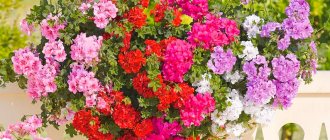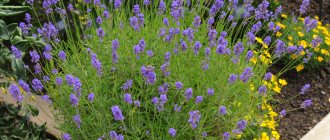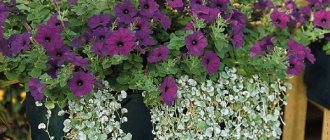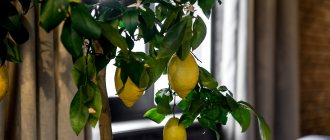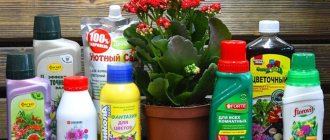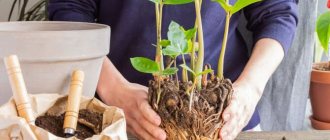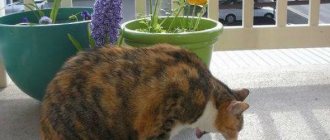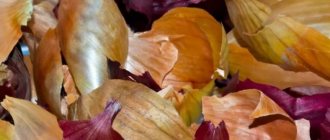SHARE ON SOCIAL NETWORKS
FacebookTwitterOkGoogle+PinterestVk
The botanical and aesthetic definitions of the concept “flower” are completely opposite: respectively, “the reproductive organ of a plant”... and “a miracle of nature.” It is the “miracle” that contains a lot of vivid feelings and emotions: perfection, harmony, delight, fragrance, etc. So why not surround yourself with this unique natural gift? The desire to contemplate beauty is natural for humans. This is why flowers for pots are so popular today.
Considering the abundance of flowers in specialized stores, it will not be difficult to choose the necessary plants for your local area.
Street flowers in pots as a decorative element of the landscape
Many people want to have a house outside the city. This is an opportunity to spend a weekend closer to nature, in peace and solitude, away from the bustle and crowded streets. An obligatory component of a personal plot is outdoor plants. Someone purchased a building on an already green area and simply made adjustments or additions, but more often the arrangement is done from scratch.
If it is not possible to create a real flower garden, then you can always create a greenhouse from flowers in pots
Not a single design development, created by a professional or an amateur, is complete without flower beds. They make the structure bright and interesting and bring vibrant natural colors into the surrounding design. Flowers are an uncomplicated, unique way to decorate the most modest landscape. And it is accessible to everyone: if the composition of the soil, lack of space or any other reasons do not allow you to set up a flower garden, you can create a real greenhouse from flowers in pots. On the street, it is appropriate to place them on the ground, along paths, benches, gazebos... Or they can be mounted on a fence, pergola, terrace, or even on the wall of a house. The structure entwined with flowering plants looks truly fabulous.
Even if you don’t have a country house, you shouldn’t deprive yourself of the pleasure of being among flowers in the summer. Pots with plants can be mounted on the outside of the balcony, loggia, and even on the window slope. In specialty stores it is easy to find both the containers themselves and various devices for hanging and installation. It is possible to purchase a pot with a ready-made flower, but you can go from a seed or sprout to a blooming avalanche.
The finished plant option seems simpler only at first glance. It is important to organize adaptation correctly, otherwise the plant will lose its attractiveness. The second way is longer, but with proper care, the beginning of the growing season will bring a lot of pleasure.
Flower pots can be used not only in a country house, but also in a city apartment
Tricolor bindweed is small, but ampelous
The declared height of the flower is up to 40 cm, they promised a compact bush. I grew it in the ground, in a flower bed. The bindweed grew lashes of at least 50 cm, lay down and crawled.
Bindweed tricolor, photo by the author
They wrote in the comments, and I myself understood that it is better to grow it as a hanging tree - in pots, flowerpots, boxes.
The corollas are beautiful, but closed in cloudy weather.
The colors of the flowers are different and interesting.
Bindweed is a cold-resistant plant that can be sown directly into a permanent flowerpot in the spring.
Flowers in a pot: a composition pleasing to the eye
The method of growing plants in pots has several advantages. And this is not only accessibility for everyone. There are several more nuances that allow you to have excellent results using a limited amount of effort:
- there is no need to weed;
- loosening the soil is much easier than when planting in open ground;
- the ability to move the plant (relevant during abnormal temperatures and other weather phenomena);
- convenient watering;
- simple transplantation process.
In order for a flower to provide aesthetic pleasure, it must be planted (or replanted) correctly, and the appropriate soil mixture, fertilizing and pot must be selected.
To transplant a flower, you need to choose the right pot, soil mixture and fertilizing
Important! Before planting (and even purchasing a flowering plant), it is imperative to consult what volume of pot is needed for a particular plant.
The volume can be determined both by the type of flower and by age (for perennials). Some plants also require specific material to make the container.
How to create a beautiful flower arrangement if the pots are different? This is where flower pots come to the rescue - decorative vessels that do not have drainage holes and are designed for placing flower pots in them.
Even if the flowers are in different pots, you can create a beautiful flower arrangement with the help of flowerpots
To the question of what can be planted in a pot, the answer will be very lengthy, if you list the types of plants, or unambiguous - everything. It is these decorative elements that sometimes combine various street flowers in pots into an interesting composition.
Recently, holes have been made in plastic flower pots, and the products have turned out to be multifunctional – hanging plant pots.
Godetia - cold-resistant flowers for flowerpots
Loved by many. Forms lush bushes covered with bright flowers.
Godetia and young bergenia, celandine and thin anemone leaves, photo by the author
You can see from the photo that my godetia did not turn out lush and beautiful. At first, its seedlings were suppressed by woodlice, which had sprouted earlier, then the growing and flowering ones were flattened by the rains. But if you planted godetia in a flowerpot and placed it under a canopy, it would be a completely different story and beauty.
This is how gorgeous godetia can grow in a pot.
Godetia seedlings easily tolerate return frosts down to -5. You don’t have to sow seedlings at home.
Flowers for hanging pots: decorative and more
The desire to decorate not only the ground part with flowers, but also the upper tiers of the site has led to the popularity of hanging versions of pots. In this position, the most suitable flowers for pots are hanging ones. It is the cascading floral mass that creates an interesting decorative effect.
The upper tiers of the garden plot can be decorated with flowers in hanging pots
Those who want to not only decorate the area around the house, but also get benefits, can plant... berries and vegetables in hanging pots. Strawberries are a great option. During the flowering period, it creates an original green cap of large leaves, decorated with white or pink flowers. The berries ripening on the stems fall, forming a strawberry “rain”.
Cucumbers of all types, as well as long-stemmed tomatoes, can also be useful decorations for your garden. Chili peppers look original in hanging flowerpots. It needs to be planted densely, then both the green mass and the ripening fruits will look more impressive.
Important! Growing conditions in open ground and in pots are significantly different. In the latter case, the vegetables may not have enough organic matter due to the small amount of soil. It is necessary to periodically feed vegetables and berries in the pots.
You can plant not only flowers, but also strawberries in hanging pots
For those to whom the sense of commercialism is completely alien, it is worth using hanging flowers for pots. These are plants that are characterized by drooping or creeping stems. The flowers are small or medium-sized, densely located on the stems. Among the ampelous species there are few non-flowering species.
Rejected marigolds - flowers for flowerpots and any flower beds
Compact, fluffy, all covered with flowers from light yellow to almost red.
Marigolds Alumiya, photo by the author
Marigold is from a Bonanza package, but it looks like a re-sort, albeit a beautiful one, photo by the author
But most of all I liked marigolds without flowers, similar to Christmas trees - filifolia Fragrant lace.
Marigolds Fragrant lace, amaranth stems in the background, indoor geranium on the right, photo by the author
The greens are edible and sweet. You can brew tea and drink it without sugar. Anise and honey aroma. I sowed them in April and they never bloomed. But I liked them as greens. You can create a “coniferous” background for the same violas.
My marigolds, planted as seedlings, suffered from frost, but the leaves grew back from the stems. I sowed them at home in April and bloomed in June. The second sowing was done directly into the ground in May, and they bloomed in July.
Hanging flowers for pots: hanging variety of shapes and colors
Almost all flower shops abound in hanging plants in the spring. Many people prefer to purchase ready-made options so that the area immediately shines with bright, vibrant shades. It would be a good idea for novice decorators to first familiarize themselves with the most common plants. This is not difficult, since there are a large number of photos of hanging flowers for pots on the Internet, and the names will easily stick in your memory when you carefully examine the plants.
The most common type of flower for hanging flower pots is petunia. Such high popularity is explained by the following features of the plant:
In order for the site to quickly shine with bright and vibrant shades in the spring, you can not grow, but buy ready-made versions of hanging flowers
- the flower is quite unpretentious;
- has a wide variety of shades;
- has a long flowering period - from spring to late autumn.
The flower loves slightly acidic soil, good light, and sufficient watering. Even if the plant has withered, it can be revived by shading it during the recovery period and increasing watering.
Surfinia is very similar to petunia. Externally, plants can be distinguished only by the more abundant flowering of the latter. The conditions for normal growing season are the same.
Until recently, until the dominance of petunias came, the explanation of what ampelous plants are began with pelargonium (geranium). This flower has many advantages:
The most common types of flowers for hanging flower pots are petunia and surfinia.
- drought resistant;
- does not require frequent watering;
- has phytoncidal properties;
- blooms from early spring to late autumn.
Grows on clay soils, loves sun.
Ceropegia may also be a good choice for beginners. A completely unpretentious flower, not even burdened by the need for frequent cutting of dry stems. You just need to plant it in slightly acidic soil with the addition of humus and place it in the sun. Ceropegia “suffers” from even slight partial shade.
Helpful advice! It is necessary to apply fertilizers to the soil where hanging flowers grow with knowledge and caution. The principle “the more the better” does not apply to this type of plant at all.
Ampelous flowers love fertilizing, but it is important not to overdo it.
Perennial hanging flowers: growing features
Ampelous flowers, like other species, can be annual or perennial. In this section, attention will be paid not so much to individual plants, but to the characteristics of cultivation.
Which plants to prefer: perennials or annuals? Perennial hanging plants for the home require the preservation of individual “individuals” during the winter period. That is, with the onset of cold weather, one or more sprouts must be planted in a pot and brought into a warm room.
Related article:
DIY flower pots: original decoration of the flower area
Pots made of fabric, paper, wood, cement, branches, ropes, waste materials and other improvised elements. Various options for decorating the product.
Providing proper care during the autumn-winter period is very important. Despite the cessation of active growth, flowers need to be provided with a certain climate: humidity, temperature, light. With the arrival of spring, the plant is again taken outside. Among perennials, preference is often given to those species that quickly grow green mass and become decorative. These include:
- Column. The flower is popularly called “goldfish” based on the similarity in color and shape of the peduncles. The stems are thick but fragile, their length reaches 80–100 cm.
- Ivy. The flowers of this plant are modest, yellowish; green glossy leaves create a decorative effect.
- Tradescantia. The decorative effect of this plant is provided by the leaves.
Many perennial flowers for outdoor pots require special conditions. Most often this is protection from direct sunlight, but not shading as such, but diffused light. This should definitely be taken into account when choosing a place for such plants.
Vessels made from building materials
Using various metal frames in the shape of a bucket or other container, you can make blanks for flowerpots from polymer gypsum or cement. The selected vessel must be surrounded with metal wire, then the resulting mesh must be removed and covered in several layers with strips of fabric soaked in the solution.
Then make a thickening by lubricating the resulting frame with plaster or cement. After drying, the surfaces need to be sanded, preparing the product for painting and decoration.
For lovers of garden sculptures, polyurethane foam may be their favorite material. From it, using various templates, you can sculpt figures that are resistant to external influences.
Ampelous annuals: how to grow seasonal flowers
From the same point of view (evaluating the growing process), let's consider annual flowers. You can propagate them in three ways: purchase seeds, sow them in order to obtain seedlings, which are subsequently planted in pots; buy seedlings, place them in a container for seasonal growth; get a ready-made flower.
Important! When purchasing seeds for growing flower seedlings, you must follow the recommendations for sowing dates. A delay of even 1–1.5 decades can affect the active vegetative process.
Each option has its pros and cons, which can only be listed: savings, additional waste of money, long waits for results, difficulty in adaptation, the ability to experiment, satisfaction from the process and achieving the goal... Everyone determines the acceptability of the conditions. In any case, the result will be the same - beautiful flowers for pots outside for the whole summer.
The advantages of annuals are abundant flowering and resistance to high temperatures.
If we try to make a comparison between the growing season and the characteristics of caring for perennials and annuals, we get the following:
- care during the season is generally the same, not counting the nuances for different types of both colors;
- annuals are absent in winter, perennials require care;
- annuals bloom more abundantly;
- summer plants are more resistant to drought and high temperatures.
It is worth paying attention to the fact that more and more new types of annual hanging plants are appearing in flower shops, surprising with their unique beauty. Among them, it is worth highlighting the hybrid petunia - calibrachoa. The flowers are smaller than those of the ancestor, but there are many more of them. The stems are longer, can reach 1.5–2 m, and become significantly lignified.
The miracle new thing is the bacopa flowers. Photos on the Internet show fluffy green stems dotted with a large number of delicate white flowers. Despite its external fragility, the plant is resistant to high temperatures, drought and excess moisture.
Decorating the site with “bells”: Nolan flower in the design of the territory
Hanging nolana flowers can be a wonderful decoration for a personal plot. This plant appeared on home gardens not long ago, but the demand for it is constantly increasing, since the plant has both high decorative qualities and good resistance to changes in humidity, temperature, and strong winds.
Nolan - “bell”. Indeed, in this hanging plant, the flower stalks resemble bells in shape and color. Small, up to 5 cm in diameter, with carved edges, the flowers come in blue, light blue and violet shades. During the flowering period, nolana produces a pleasant aroma. The leaves are green and succulent, which allows the plant to survive in conditions of significant drought. The flowering period is quite long - from mid-June until the onset of sub-zero temperatures. The stems are creeping, one plant can cover an area of up to 1 m².
On the Internet in the photo, ampelous Nolan flowers are presented in several types: blue inflorescences with a yellow center, blue with a yellow core and white pharynx, purple with small white splashes along the pistil.
It is worth noting that this flower has a tap root system that practically does not branch out to the sides. This must be taken into account when choosing a container for planting.
Hanging nolan flowers can decorate any garden plot
For lovers of bright design: ampelous nasturtium
Nasturtium occupies a special place among hanging plants. Looking at a pergola, gazebo or balcony entwined almost to the top, you might think that this perennial plant has greened up the structure in about five years. In fact, one summer season is enough for nasturtium.
There are 90 species of this plant in total. Among them are cultural – 25. We use 4 types as decoration:
- small nasturtium - a low plant for flower beds and front gardens;
- Canary nasturtium is a vine that definitely needs support;
- shield-bearing nasturtium - a subshrub with creeping stems;
- Nasturtium is large, produces shoots up to 70 cm.
The last three types can be used as hanging flowers for flower pots in the country. Pictures with names on the Internet will help you choose the right option.
The flowers of this plant can be yellow or orange. In large nasturtiums they are large and bright. The Canary and Thyroid ones are yellow and small.
A plant with dark red double flowers was obtained by crossing large and shield nasturtiums.
Important! Hybrid nasturtium grown from its own seeds will not inherit its mother's characteristics. It is better to purchase seedlings or seeds in specialized stores.
Nasturtium is heat-loving, but in the scorching summer heat it is better to shade the plant. Watering is generally required to be moderate; more intensive watering should be used during the budding period.
Flower growers should understand that hybrid nasturtium grown from its own seeds will not inherit its mother’s characteristics.
Dichondra ampelous: photos of “waterfalls”, “backgrounds”, “foundations”
Ampelous dichondra can be classified as one of those plant species that have not yet been fully appreciated. You can see it more often in those areas that were designed by professional designers. Ampelous plants are not only stems strewn with flowers. In particular, dichondra has decorative leaves. The peculiarity of the plant lies not only in their color, but also in the abundant fluffy mass that the flower, under optimal conditions, can gain in just two to three weeks.
The most common types are dichondra “silver waterfall” and “emerald waterfall”. The densely cascading, fairly straight stems are truly associated with a waterfall. The words "silver" and "emerald" indicate the color of the leaves.
The flower is extremely unpretentious, does not require frequent and abundant watering, and can withstand high temperatures. Loves external spraying with warm water. The emerald species feels comfortable in the shade.
Quite often, these hanging flowers for pots (photos on the Internet clearly demonstrate this) are used when decorating areas as a background, shading and emphasizing the brightness of other flowering plants. Several dichondras, arranged in a certain order, can form a tent, hedge and other three-dimensional figures.
Perennials
The choice of perennial flowers for a flower bed is justified in many ways: this is constancy, and the absence of the need to tinker with seedlings every spring, and a well-kept garden for several seasons. In addition, if you need luxurious flower beds with large, bright, showy flowers, then these are mostly only perennials. Annual flowers grow much smaller and more modest.
In addition, when growing perennial flowers, there is no need to spend money on buying seeds every year. And these flowers are much less troublesome to grow.
Almost always continuously flowering flower beds contain the following plants:
- peonies;
- phlox;
- roses;
- dahlias;
Moreover, due to their many varieties and varieties, these plants can be used to form any flower bed: any height, shape and shades. Many gardeners choose flowers in the same color scheme or contrasting ones - such flower beds look unusually picturesque.
For early spring flowering, hyacinths and tulips of suitable shades can be added to this “basic composition”, and perennial asters can be added for autumn flowering.
To make your flowerbed shine with fresh, delicate colors in early spring, plant the following garden perennials on it:
- periwinkle;
- snowdrop;
- tulips;
- hyacinths;
- muscari;
- crocuses;
- daffodils, etc.
In the summer, flower beds decorated with:
- dahlias;
- delphinium;
- lilies;
- anemones;
- poppies;
- roses;
- sage, etc.
The following perennials are useful for late summer and fall:
- chrysanthemums;
- sedum;
- rudbeckia;
- yarrow;
- echinacea;
- asters, etc.
Let's take a closer look at the most popular varieties of perennials for the continuous flowering of a flower bed.
Rose
It is no coincidence that this plant is called the “queen of flowers” - in beauty, sophistication and luxurious appearance, few plants can compare with a rose. In addition to its spectacular appearance, roses always smell very pleasant, and you can enjoy its aroma for a long time
Many varieties of roses are quite demanding in terms of care and climate. And in many regions of our country, this beauty can only be grown in a greenhouse or greenhouse. If you want an unpretentious variety, go for the tea rose - it is a pest- and disease-resistant species that tolerates cool climates and not too much care.
Snapdragon
Many gardeners plant this bright perennial on their plots. The plant is distinguished by its outstanding decorativeness and unpretentiousness. The shape of the flowers is unusual and interesting, and the colors of the petals are striking in their diversity and brightness. However, plants with petals of blue and light blue shades have not yet been bred.
Snapdragons can be either short or quite tall. The plant feels good in partial shade, but will delight you with greater brightness in a sunny flowerbed.
Phlox
The plant is a perennial, beautifully blooming and quite unpretentious. Phlox can grow in almost any soil and are undemanding in terms of lighting and growing location. They overwinter without problems and tolerate even severe frosts well. They are very decorative in appearance, which, along with their unpretentiousness, makes them a real floral treasure.
Bell
A beautiful and delicate flower, associated by many with a field plant. However, now breeders have created so many different varieties of bells that among them you can find luxurious, even terry specimens.
The bell blooms for a long time, pleasing the eye all summer, but its flowering begins only in the second year after planting. It is better to choose shaded areas for it; the bell does not have any special requirements for the soil.
Lily
An exquisite, charming perennial with a pleasant aroma. The shades of lily petals can be any; the plant is good both in a flowerbed and as a cut flower, in a bouquet. Despite its delicate beauty, the lily is not capricious in care, and is also resistant to most garden pests. This plant begins to bloom in June and continues until autumn.
Delphinium
A very beautiful perennial, loved by many gardeners. The buds of the plant resemble tall candles and stand out with their beauty and tall growth against the background of the entire flower garden. Typically, delphinium is grown either in the center of a flower bed or at the back of a flower bed, as an elegant background. The combination of this plant with phlox and lilies looks very impressive.
Hyacinth
One of the primroses is a plant with magnificent, very bright curly caps of inflorescences. Since hyacinth is short in stature, it is usually planted along the edge of a flower bed, as a kind of border.
Clematis
This is a climbing plant that can decorate not only flower beds, but also an arch, a gazebo, and any support. The plant blooms exquisitely until late autumn. The color of clematis petals is amazingly varied - any gardener will choose the most suitable shade for himself.
Globular plants: the highlight of landscape design
Ball-shaped plants are an excellent design element for garden plots. They occupy a special position in terms of visual perception. Hanging lamps direct the eye vertically, while those planted in the ground direct the eye horizontally. Ball-shaped ones unite directionality, focusing attention on themselves.
This is not to say that the choice of spherical plants is great. The most common option is thuja. Evergreen balls planted in flowerpots decorate alleys, facades of buildings, entrances to gazebos, etc. There are also several types of ornamental shrubs that are planted in containers. Their crown is formed into a ball by cutting.
Among the spherical outdoor flowers in pots, the name of which is familiar not only to botanists, it is worth noting the chrysanthemum. Its dwarf type (namely, this is the one that gives the appropriate shape) has small round flowers of various colors and shades. If thujas delight the eye all summer, chrysanthemums will reach their decorative value only by the end of August - beginning of September. You can admire them for a month and a half. The appearance of pots with chrysanthemums on the site so late has its own charm: the design is a little boring, new colors and shapes will be very useful.
Globular plants have always been an excellent element in the design of personal plots
Helpful advice! It is better to purchase dwarf chrysanthemums ready-made, that is, planted in pots. It is quite difficult to achieve a spherical shape on your own without professional skills.
Alyssum
The North American perennial from the cabbage family is famous for its hardiness - after all, in the wild it is a rock ground cover. The color range of alyssum, or simply alyssum, is varied: there are white, yellow, purple, lilac, pink and purple varieties. All of them are compact, 20-40 cm, and look great in outdoor flower pots and balcony greenhouses. Alyssum is actively used in landscape design, planted in mixborders, edgings, rock gardens and rockeries.
Design ideas for the garden: hanging plants as part of compositions
Decorating the local area with flower arrangements is a common occurrence. Sometimes there is a garden on a personal plot, which only looks cheerful and elegant when it is in flower. But it can also be decorated with hanging flowers, organizing a small recreation area among the spreading tree crowns. You can use the following ideas.
Place a cart in an open area (so that the sun's rays penetrate) and fill it with pots with hanging flowers. Opposite, in the shade of trees, place a bench. The garden will be filled with colorful flowers, and there will be a great place for privacy and relaxation.
Don't rush to cut down a dead tree! On its branches you can hang pots with hanging flowers - the original oasis will delight you all summer with lush greenery and colorful flowers.
In open areas of the garden, you can place old tubs (and, if desired, new ones) and install flower pots on them. A walk through such a garden will bring a lot of pleasure.
When creating the compositions proposed above or invented independently, it is necessary to select the right plants so that they complement each other and favorably shade each other. To do this, you should pay attention to the photo, the names of hanging plants for the garden and try to purchase specimens that correspond to the image formed in your creative imagination or seen on the Internet.
Street flowers: ranking of the most popular plants
Flowers in pots for the street can be purchased at the store. Like any product, hanging flowers can be ranked according to the degree of decorativeness, stability and unpretentiousness, and even according to the features of their functional purpose.
The plant rating below is compiled precisely on the basis of the listed indicators, to which the price is added.
Begonia is the most capricious hanging plant
5. In fifth position is ivy. It creates an excellent backdrop for plants with bright flowers. Different types of ivy have differences in the color of the leaves: dark green, green with white streaks, green with white splashes, etc. The plant is perennial, does not require special care, and feels good even in a shaded place.
4. Next in the ranking is begonia. One of the most capricious ampelous plants. Does not tolerate direct sunlight, drafts, requires abundant watering, “suffers” when changing location. With proper care, it pleases with bright colors of warm shades.
3. The third result is for lobelia. Requires regular watering and loves warmth. The flowers are small and can be white, blue or pink. This plant can also be planted as a border.
2. Vervain is very close to the top of the ranking. It feels quite comfortable in direct sunlight; moderate but regular watering is necessary. The buds come in different colors: white, yellow, red, blue.
Verbena buds come in a variety of colors: they are blue, white, red, yellow
1. The place of the winner has been occupied by petunia for a long time. The variety of species (with small, large, plain, multi-colored buds) and unpretentiousness have made it a favorite of many gardeners and florists. A large number of photos of petunias in pots, which are a bright and original decoration of areas in design developments, are a clear confirmation of leadership.
Tuberous begonia fails as an indoor flower
This beauty is not easy to care for. I’ve been growing my Fimbiata yellow for two seasons now, and I’m on my third. At first I tried to keep it like a houseplant.
She was sick, stretched out, but bloomed profusely.
Begonia tuberosa Fimbriata on the windowsill is beautiful with flowers, but not as a bush, photo by the author
Last summer, I practically threw away my begonia with its leaves curling and turning brown for some unknown reason - replanting it in the ground under an apple tree.
There she managed to produce only the first female non-double buds. But it stopped hurting and was compact.
Fimbriata in the ground, photo by the author
I realized that tuberous begonia grows better in the fresh air. I dug up the tuber in the fall, stored it in the refrigerator for the second winter, and also rooted the cuttings in a pot.
Fimbriata cuttings in a pot at home in winter, they don’t stretch, which I’m glad about, photo by the author
Now I’ll try to keep the begonia as much as possible outdoors. She does not tolerate frosts. I will get the tuber for germination later - in April, and in May, with the arrival of warmth, I will expose it to the sun and breeze for at least a day.
I bought two more seeds: tuberous red and ampelous white.
Seeds of my future begonias, photo by the author
I liked fiddling with this flower, there is a payoff. Sometimes flowers are capricious - they do it this way and that, but they don’t do anything. But with begonia, I change something and it reacts, grows differently. So, we will find a common language.
In a flowerpot this beauty can look like this.
Flowers for pots: caring for decorative outdoor plants
Each flower requires certain care. But there are general rules that apply to all flowers in pots on the street. In order for the plant to delight with a riot of greenery and flowering, the following must be taken into account:
Even the most drought-tolerant flowers need regular watering.
- Even the most drought-resistant specimens require regular watering. Moistening the soil from time to time will certainly have a negative impact on the growing season.
- On hot days, watering can be increased for all plants. The root system is located in a limited amount of soil; the plant cannot independently obtain additional moisture.
- Mulching should be used to retain moisture.
- Once every two weeks it is necessary to fertilize the plants. If this is not done, in the second half of summer the intensity of flower development will noticeably decrease.
- Be sure to shape the crown by cutting off excess shoots.
- Fading buds must be removed. This will not only ensure the aesthetics of the plant, but will also eliminate unnecessary waste of nutrients, which will help stimulate growth.
- Every spring, hanging plants must be planted in fresh soil mixture.
In hanging flowers for pots, it is necessary to form a crown by cutting off excess shoots
Important! To place hanging plants, you need to choose an area that will be well ventilated, otherwise diseases cannot be avoided.
Fuchsia
The whimsical fuchsia lantern buds feel at ease in a fresh, cool and humid climate, but cannot stand the scorching sun and heat, so the crop is well suited for planting on the north side of the house. The abundant flowering of this beauty strongly depends on the saturation of the soil with valuable minerals, mainly nitrogen. During the warm season, fuchsia can be planted in the garden, preferably by burying it in the ground directly in a pot, so that it can be easily removed and taken into the house in the fall.
Catalogs of hanging flowers: how to use them correctly
Almost every professional and amateur florist looks through plant catalogs before turning an idea into reality. The perfectly processed photos show flowers for pots, the name and brief description of the plant. The image is always attractive, delightful with colors and realism. But it’s worth paying special attention to the descriptive part.
A properly designed catalog always contains information about the sizes of leaves and buds, which helps to visualize the content of the photo. Data on growing conditions and information on basic care features provide a more complete understanding of the plant. It is better if the description of each flower is structured. In this case, it is easier to highlight and remember information of interest.
Correctly designed catalogs of ampelous flowers always contain information about the sizes of buds and leaves
Unfortunately, in many catalogs posted on the Internet, other types of plants are also found among the hanging flowers. The reason most often is the desire of the authors to make the selection more extensive or there is an unfair attitude. In both cases, you should not trust the information - it is better to turn to other sites, where all the names and photos of hanging flowers for pots on the street will correspond to the declared appearance.
Flowers can decorate any building, even the most drab. It is not difficult to select the necessary plants, given their abundance in specialized stores. It is very important to create the necessary conditions for green pets. Only then will they fully demonstrate their aesthetic potential, giving them lush greenery and a riot of colors.
Lobularia - flowers for flowerpots, similar to alyssum
It is very similar to alyssum, but, according to the description, the bushes grow miniature (8-12 cm) and fluffy. My alyssum grew strongly and was ampelous.
Both flowers are suitable for pots - alyssum and lobularia.
Lobularia seeds, photo by the author
I wanted more blue flowers, but there are also varieties with white inflorescences and red shades.
You can sow directly into a permanent pot in the open air from April-May.

